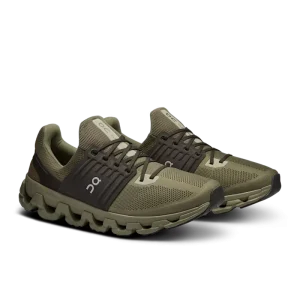Upgrading to the latest equipment can be costly. Whether you’re looking for a personal gadget or a business aiming to equip your office without breaking the bank, buying refurbished equipment can be an innovative, budget-friendly alternative. However, this process can be tricky, and without the proper knowledge, you might end up with a product that doesn’t meet your expectations. This guide will walk you through everything you need to know to decide when buying refurbished equipment.
Understanding Refurbished Equipment: What Does It Mean?
Refurbished equipment is often misunderstood. “refurbished” describes items returned to the manufacturer or retailer for various reasons, such as a defect, customer dissatisfaction, or even minor cosmetic damage. These items are then repaired, tested, and restored to a condition that meets the manufacturer’s standards before being sold at a reduced price.
There are different types of refurbished equipment:
- Manufacturer Refurbished: The original manufacturer or an authorized service provider has repaired and restored these items. They often come with a manufacturer’s warranty and are typically the most reliable option.
- Seller Refurbished: These items are refurbished by third-party sellers who may or may not have an official relationship with the original manufacturer. The quality can vary, so it’s essential to research the seller’s reputation before purchasing.
- Certified Refurbished: This label is usually applied to items that have undergone rigorous testing and meet specific standards set by the manufacturer or a trusted refurbisher. Certified refurbished products often come with a warranty.
Understanding the nuances of what “refurbished” means is crucial because it helps you set the right expectations regarding the condition and quality of the equipment you are buying.
The Benefits of Buying Refurbished Equipment
One of the primary reasons people opt for refurbished equipment is cost savings. Refurbished items can be significantly cheaper than brand-new ones, often by 30% to 70%. This is particularly advantageous for businesses looking to equip their offices with the latest technology while maintaining their budgets.
Another benefit is sustainability. Buying refurbished equipment is an eco-friendly choice as it reduces electronic waste. By choosing refurbished, you’re giving a second life to a product that might otherwise end up in a landfill.
Moreover, refurbished products often undergo more rigorous testing than new products. Manufacturers and sellers want to ensure that these items meet a high standard before reselling them, which means that refurbished products are often just as reliable as new ones, if not more so.
Common Myths and Misconceptions About Refurbished Equipment
Many people would prefer to buy refurbished equipment despite the benefits due to common myths and misconceptions. One prevalent myth is that refurbished items are inherently flawed or of lower quality. Refurbished products are typically returned for minor issues or even for reasons unrelated to the product’s performance, like buyer’s remorse.
Another misconception is that refurbished products don’t come with warranties. While this can be true for some items, many refurbished products, especially those certified by manufacturers, come with warranties that provide peace of mind.
Some people also believe that refurbished equipment needs to be updated. While it’s true that not every refurbished item is the latest model, many are only slightly older versions that still offer excellent performance, especially for everyday tasks.
Where to Buy Refurbished Equipment: Top Places to Shop
When it comes to purchasing refurbished equipment, the source of the product is one of the most critical factors to consider. Reputable sellers are more likely to offer high-quality items and provide reliable warranties. Here are some of the best places to shop for refurbished equipment:
- Manufacturer’s Outlet Stores: Many manufacturers have online stores selling refurbished items directly. For instance, Apple, Dell, HP, and Samsung have outlets where you can find refurbished gadgets that have been restored to their original condition by the manufacturer.
- Authorized Retailers: Best Buy, Amazon, and Newegg offer certified refurbished products from various brands. These retailers typically have strict standards for refurbished items, ensuring they meet high-quality benchmarks.
- Specialized Refurbishing Companies: Gazelle, Back Market, and Refurb.io specialize in refurbishing and selling used electronics. These businesses often provide detailed descriptions of their products’ condition and offer warranties, making them a safe choice for refurbished purchases.
- Auction Sites: eBay and other auction sites can be good sources for refurbished equipment, but they come with more risks. It’s crucial to check the seller’s feedback and ensure the item is clearly described as refurbished, not just used.
What to Look for When Buying Refurbished Equipment
When buying refurbished equipment, it’s essential to be an informed shopper. Knowing what to look for can help you avoid common pitfalls and get a good deal. Here are some key factors to consider:
1. Condition and Grading
Refurbished equipment is often graded based on its condition, and understanding these grades can help you make a more informed decision.
- Grade A: The item is in near-perfect condition with little to no signs of wear. It’s almost indistinguishable from a new product.
- Grade B: The item may have minor cosmetic imperfections, such as small scratches or scuffs, but it works perfectly.
- Grade C: The item has noticeable cosmetic wear but is fully functional. This grade is usually the most affordable but also the most worn.
Knowing the grade of the product helps you balance your priorities between cost and cosmetic condition.
2. Warranty and Return Policy
One of the biggest concerns with refurbished equipment is the warranty. Always check whether the item comes with a warranty and, if so, what it covers and how long it lasts. Some refurbished products come with full warranties, while others may offer only limited coverage.
Similarly, a robust return policy is essential. It allows you to return the item if it doesn’t meet your expectations. Make sure to understand the return window and whether there are any restocking fees.
3. Original Accessories and Packaging
Sometimes, refurbished products don’t come with the original accessories or packaging. While this might not be a deal-breaker for some, it’s worth considering if you expect a complete set or plan to gift the item. Ask the seller if the product includes all the original accessories, like chargers, cables, and manuals.
4. Testing and Certification
Ensure the refurbished equipment has been thoroughly tested and certified by the manufacturer or a reputable third party. Certification often means the product has passed rigorous testing and meets specific standards, making it a safer choice.
5. Customer Reviews and Seller Reputation
The seller’s reputation is crucial when buying refurbished equipment, primarily online. Look for customer reviews and ratings to gauge the experiences of previous buyers. Reputable sellers are more likely to provide accurate descriptions and high-quality products.
Types of Refurbished Equipment: What You Can Expect
Refurbished equipment spans various products, from laptops and smartphones to industrial machinery and office furniture. Here’s what you can expect from some of the most commonly purchased refurbished items:
1. Refurbished Laptops and Computers
Refurbished laptops and desktops are among the most popular refurbished items. These devices are often returned due to minor defects or because they were overstocked. Refurbished computers typically undergo extensive testing, and many come with upgraded components, making them as powerful as new ones but at a lower cost.
2. Refurbished Smartphones and Tablets
Smartphones and tablets are frequently refurbished due to the rapid release of new models. Refurbished devices in this category are usually thoroughly inspected, and any defective parts are replaced. Popular brands like Apple and Samsung often offer certified refurbished phones and tablets with warranties, making them an excellent option for budget-conscious buyers.
3. Refurbished Office Equipment
For businesses, buying refurbished office equipment like printers, photocopiers, and even office furniture can result in substantial savings. These items are often returned due to lease expirations or office upgrades and are then refurbished to ensure they are in good working condition.
4. Refurbished Home Appliances
Large appliances such as refrigerators, washing machines, and microwaves are also available as refurbished products. These items are usually returned due to minor cosmetic damages or shipping issues. They are then repaired and sold at a discounted price. Refurbished appliances are a practical choice for homeowners looking to upgrade their kitchens or laundry rooms without overspending.
5. Refurbished Industrial and Professional Equipment
Refurbished industrial equipment, including machinery, tools, and medical devices, is a viable option for businesses in specialized industries. These products often undergo extensive refurbishing and testing to meet safety and performance standards. Purchasing refurbished industrial equipment can be a cost-effective way for businesses to maintain or upgrade their operations.
Tips for Buying Refurbished Equipment Online
Buying refurbished equipment online can be convenient, but avoiding potential issues requires more diligence. Here are some tips to help you make a wise purchase:
1. Read the Fine Print
Always read the product description and terms of sale carefully. Ensure you understand the item’s condition, what’s included in the package, the warranty details, and the return policy. Don’t hesitate to contact the seller if you have any questions.
2. Compare Prices
While refurbished items are generally cheaper than new ones, comparing prices across different sellers and sharing prices helps ensure you get the best deal possible. Remember that the lowest price isn’t always the best option, especially if the seller has a poor reputation or lacks a warranty.
3. Check the Seller’s Reputation
Always check their ratings and reviews when buying from third-party sellers on platforms like eBay or Amazon. Look for sellers with a high feedback score and positive reviews regarding refurbished products. This can give you confidence in the quality of the item and the seller’s reliability.
4. Beware of Scams
Unfortunately, the online marketplace is rife with scams, and refurbished equipment can be a target. Be wary of deals that seem too good to be true or sellers that request unusual payment methods. Stick to well-known platforms and reputable sellers to minimize your risk.
5. Consider Extended Warranties
Some sellers offer extended warranties on refurbished products, which can provide additional peace of mind. While this might increase the overall cost, it can be worth it if you’re investing in a high-value item.
The Refurbished Equipment Buying Process: Step by Step
To make the refurbished equipment buying process smooth and stress-free, follow this step-by-step guide:
1. Identify Your Needs
Start by identifying what you need. Determine the type of equipment, the required specifications, and your budget. Knowing precisely what you want helps narrow your options and makes the search process more efficient.
2. Research Options
Once you know what you’re looking for, research different brands, models, and sellers. Check reviews and ratings to ensure that the items you’re considering meet your expectations regarding quality and performance.
3. Evaluate the Condition
When you find a potential purchase, carefully evaluate its condition. Look for detailed descriptions and images that show the item’s cosmetic and functional state. Understanding the grading system helps you assess whether the product’s condition aligns with your needs.
4. Review the Warranty and Return Policy
Before finalizing your purchase, review the warranty and return policy. Ensure you have adequate protection if the item doesn’t meet your expectations. Consider looking elsewhere if the warranty is unclear or the return policy is restrictive.
5. Make the Purchase
Once you’re satisfied with the product, the price, and the terms of sale, go ahead and make your purchase. Record all transaction details, including the receipt, warranty information, and any communication with the seller.
6. Test the Equipment
After receiving the refurbished equipment, test it thoroughly. Ensure that it works as expected and meets the description provided by the seller. If you encounter any issues, contact the seller immediately to resolve them, especially if you’re still within the return window.
7. Leave a Review
Once you’re satisfied with your purchase, consider leaving a review for the seller. Positive reviews help other buyers make informed decisions and reward reputable sellers for their quality products and services.
When to Avoid Buying Refurbished Equipment
While buying refurbished equipment has many advantages, there are situations where it might be better to buy new:
- If You Need the Latest Technology: If you require the latest model with cutting-edge features, you might need more than refurbished equipment, as these items are typically a generation or two behind the newest releases.
- For Products with Frequent Wear and Tear: Items that endure frequent wear and tear, like shoes or certain types of clothing, might not be the best candidates for refurbishment. In these cases, the cost savings might not justify the reduced lifespan.
- When Buying Gifts: If you’re purchasing a gift, especially for someone who values newness, buying refurbished might not be the best option unless you’re sure the recipient would appreciate it.
- In High-Risk Scenarios: If the equipment is mission-critical, such as medical or safety equipment, it’s better to buy new to ensure you have the latest and most reliable technology.
Conclusion
Refurbished equipment can be a wise investment, offering substantial savings and contributing to a more sustainable consumption model. However, it’s not a decision to be taken lightly. By understanding what refurbished means, knowing where to shop, and being mindful of the potential pitfalls, you can make an informed purchase that balances cost with quality.
Research thoroughly, evaluate the product’s condition, and buy from reputable sellers. When done right, purchasing refurbished equipment can provide you with high-quality items at a fraction of the cost, all while minimizing your environmental footprint. Whether you’re a tech enthusiast, a small business owner, or someone looking to upgrade on a budget, refurbished equipment offers a compelling alternative to buying new.





